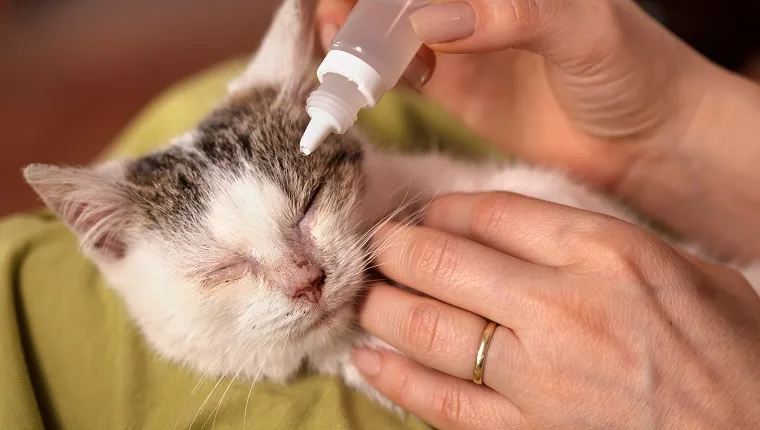Dry eye in cats is a condition that occurs when a cat fails to produce enough tears. It’s also known as keratoconjunctivitis sicca (or KCS).
KCS can result in a cat experiencing swollen eyelids or having issues with their corneal pigmentation.
If you see the signs in your cat, then you must get to a veterinarian for a proper diagnosis and treatment. Here’s what you should know about the symptoms, causes, and treatments for dry eye in cats.
Symptoms Of Dry Eye In Cats
As you might expect from the name of the ailment, dry eye causes symptoms that primarily manifest themselves in and around cats’ eyes.
Some of the most common symptoms include
- Blinking a lot
- Swollen eyelids
- Pus or mucus discharge from the eye
- Appearance of a third eyelid
- Changes in the cornea, especially pigmentation
Along with physical symptoms around the eyes, KCS can also cause a cat to seem depressed or more withdrawn than usual.
Causes Of Dry Eye In Cats

There are a wide number of causes of dry eye in cats. Studies also suggest that female cats are more likely to be affected by dry eye than male cats.
Some of the most common causes include:
- Cat flu or feline herpesvirus
- Neurological diseases
- Chlamydiosis
- A traumatic injury that affects the central nervous system
- Adverse reaction to drugs, especially anti-inflammatory medicines
Treatments For Dry Eye In Cats
If you bring your cat to a veterinarian suspecting a case of dry eye, the vet will perform a number of tests and exams to determine the cause.
Along with going over your cat’s medical history, the vet will conduct a thorough eye examination. This might include a Schirmer tear test, which involves using strips of paper to monitor tear production and dryness in the eye.
In milder cases, your vet might prescribe eye drops to deal with the problem. They may also prescribe antibiotic creams if an infection is present.
In more severe cases, your vet might consider a surgical procedure known as parotid duct transposition. This involves rerouting the cat’s aqueous ducts so that saliva can be used to make up for a lack of tears.
Has your cat ever suffered from dry eye? What advice did your vet give you for treating your pet? Let us know about the experience in the comments section below!









